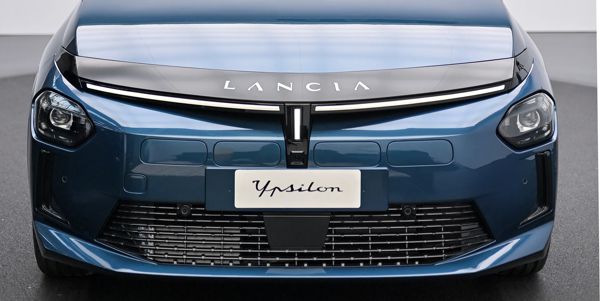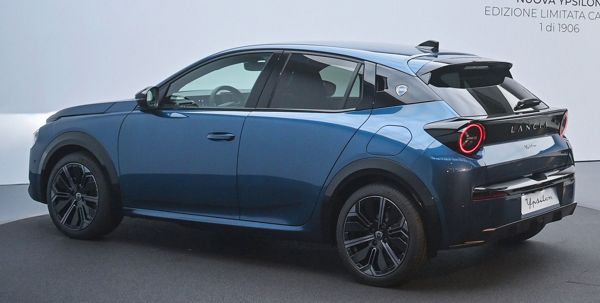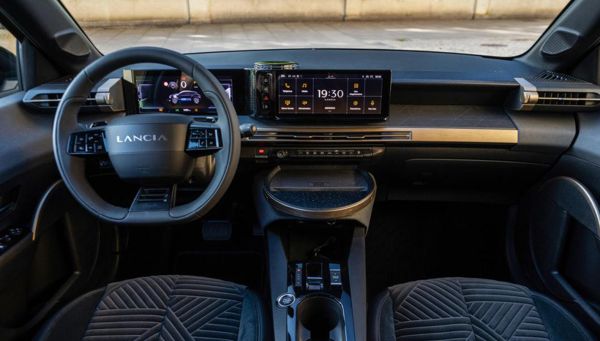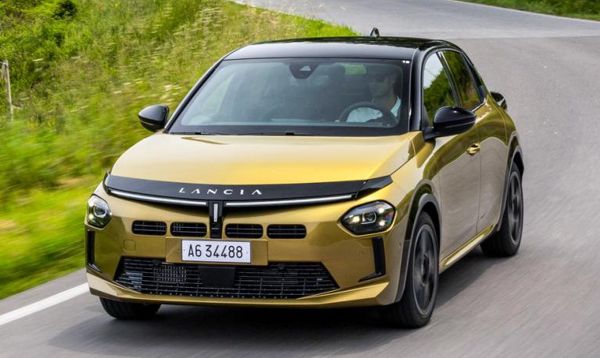Published
on 6
Aug 2024
|
All rights reserved.
|
|
 |
|
Lancia's
comeback starts from the smallest model.
|
|
It is quite incredible
that the last Lancia Ypsilon lasted for 13 years. Even more incredible
is that it still captured 45,000 units of sales in the final year of
production, even though its presence was limited to only the Italian
market. In fact, Ypsilon had been Lancia’s sole surviving model for
some years. Without it, the once-reputed brand would have been folded
long ago.
Lancia called the new Ypsilon as the 5th generation model. That would
be true if you consider Y10 as the
first generation. For 4 decades, the
Y10 and Ypsilon had been A-segment cars, i.e. the smallest car you can
buy in Europe. Production was relocated from Italy to Poland in the
last generation to lower costs and share production line with its
sister car Fiat 500. When FiatChrysler evolved to Stellantis, the
platform strategy is overhauled. The new Ypsilon is derived from the
CMP platform of Peugeot 208 and Opel Corsa etc. This means it becomes a
B-segment model. Production moved to Spain, so it can no longer rely on
low prices to boost sales. Instead, Lancia wants to sell on premium
image, something it tried but failed in the last couple of decades.
In my opinion, the biggest strength of the new car is styling. Although
the familiar profile implies the hardware underneath is identical to
Peugeot 208, Lancia’s designers succeed in creating a really stylish,
original and unusual piece of art. The front end is easily
recognizable, thanks to a black stripe at the leading edge of the
clamshell bonnet, hexagonal headlights at the very corners and 4 small
rectangular vents at the nose (but sealed on electric model). The tail
is equally amazing, featuring a spoiler-style extension from the
tailgate which is painted in gloss black. Circular LED taillights
protrude from the corners, said to be inspired by Stratos but I think
it is even more creative. There are also other remarkable design
elements, such as the 3 LED light bars at its bonnet edge and nose that
is a modern interpretation to the classic Lancia grille on models like
Delta. You won’t find a traditional Lancia badge on the car, but the
"LANCIA" letter inscriptions both front and rear do the identity job
nicely, helping the car to look classy.
 |
|
Lancia’s
designers succeed in creating a really stylish, original and unusual
piece of art.
|
|
Inside, the dashboard structure is completely new to the group,
emphasizing space and simplicity. If you don’t like Peugeot’s
arrangement for the steering wheel and instrument, you will be relieved
that Lancia uses a more conventional steering wheel (only the bottom is
flat) that lets you see the instrument readings through it. The
instrument is a 10.25-inch display, but I like that it is not combined
with the 10.25-inch touchscreen into a single flat panel as in so many
rivals, because car design should be different from household furniture
in my opinion. Another good news is Lancia leaves a row of physical
switches on the center console just below the slim air vents, so that
you can adjust climate control easily. Regarding the round “table”
beneath the switches, it is handy to place your drinks or coffee when
the car is stationary, but anything on it would be easily thrown out
when you steer the car with moderate enthusiasm.
Despite the premium pretension, the interior is not particularly
high-quality. There are plenty of hard plastics on the door panels and
center console with which you may touch, and the fit and finish (at
least on preproduction cars) look far from perfect. However, the seats,
both front and rear, are superbly comfortable for long journeys. Space
is just about the same as other Stellantis CMP superminis, which means
the rear struggles to accommodate taller adults. The rear cabin is also
pretty narrow. On the plus side, boot space is near the top of the
class, offering a remarkable 352 liters or, in the case of electric
model, 309 liters. That gloss black rear spoiler portion is not just
for looks.
 |
|
Superbly
comfortable seats and better sound insulation mark it out from other
Stellantis compact cars.
|
|
The engine range cannot be simpler. Lancia offers only one ICE
powertrain and one electric option. The former is Stellantis’ 1.2-liter
PureTech three-cylinder turbo with 100 hp, mated to the new mild hybrid
6-speed DCT setup. The 48V electric motor inside that transmission
provides a useful boost of 29 horsepower and 41 pound-foot of torque at
lower revs and double as automatic stop-start. It can pull the car on
its own at up to 19 mph or during coasting, achieving a fuel saving of
up to 15 percent. 100 horsepower might sound modest, but the extra
flexibility offered by the electric motor makes it feel quicker in the
real world. Moreover, the system works smoothly, as power transition is
barely perceptible.
The electric version is naturally quicker in most situations. Its 156
horsepower and 192 pound-foot output more than compensates the weight
penalty of 280 kg, allowing the Ypsilon to get from 0-60 mph in less
than 8 seconds, although top speed is limited to 93 mph as in other
Stellantis siblings. The 51 kWh battery gives a WLTP range of 400 km
(250 miles), neither bad nor remarkable. Problem is, it costs 40
percent more than the hybrid model to buy, almost as expensive as Mini
electric. This means the hybrid is a more sensible choice.
 |
|
Mild-hybrid
power is smooth and flexible.
|
|
The chassis differs from Peugeot 208 just in tuning and 24mm wider
tracks. The suspension is set slightly stiffer, along with weightier
steering. As a result, it resists roll better and feels more tide down
over undulating roads, but not quite as agile or playful as the
Peugeot. The ride is firmer but not uncomfortable. The balance between
ride and handling is still good. The only weakness is an abrupt brake
pedal modulation, especially on the electric model. Lancia applied more
sound insulation materials to fill the doors and around engine
compartment, no wonder the car feels more refined on the run,
exhibiting less engine and road noise.
In terms of driving and practicality, the Ypsilon is not remarkably
different from most Stellantis products. It is good but without setting
new standards. What makes it stand out is a creative styling. Whether
customers willing for pay for its styling remains to be seen, but the
Ypsilon will lead the comeback of Lancia brand into the European
market. Later on, there will be a hot electric version badged “HF”,
then a C-segment crossover named Aurelia and a new Delta. The revival
plan might be challenged by the threat of Chinese EV brands, but if
Stellantis deserves to have a place in Europe’s premium segments, I
would say Lancia is a better bet than DS.
|
Verdict:     |
|